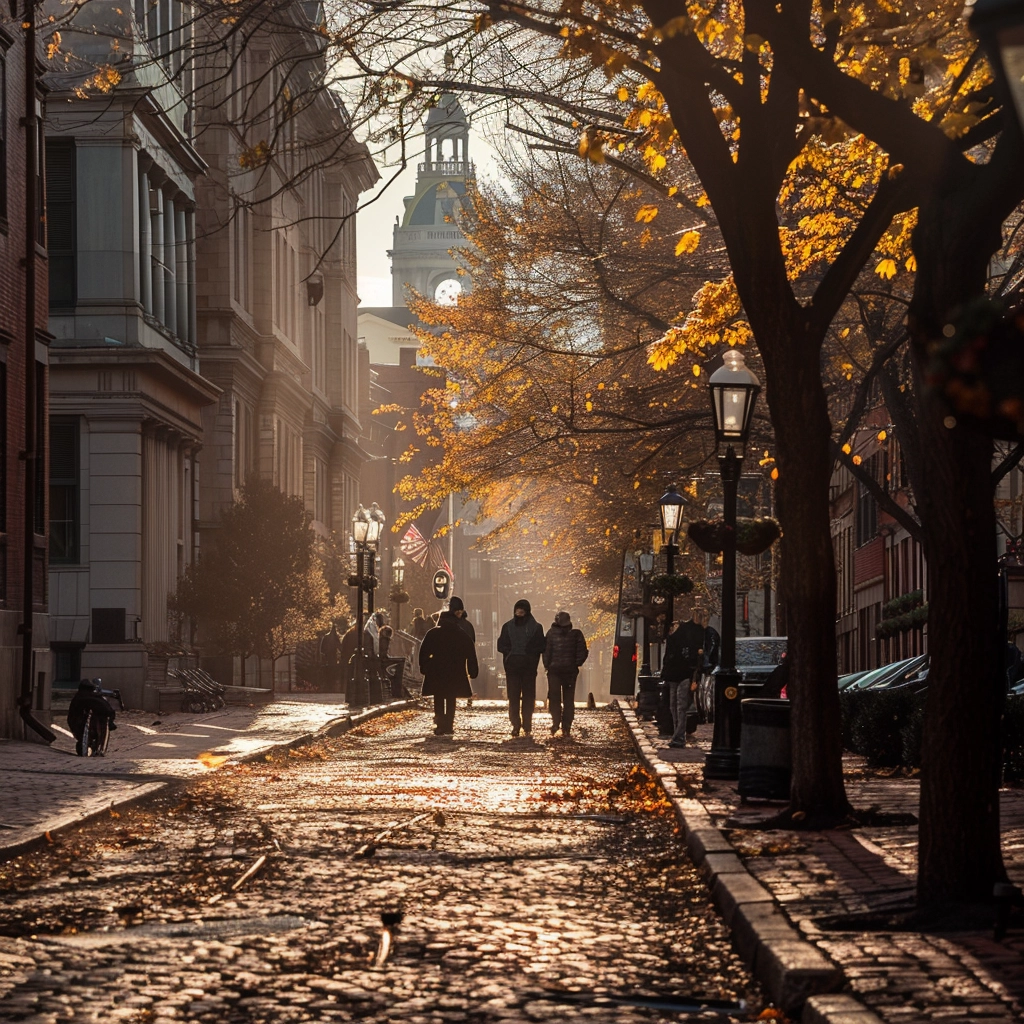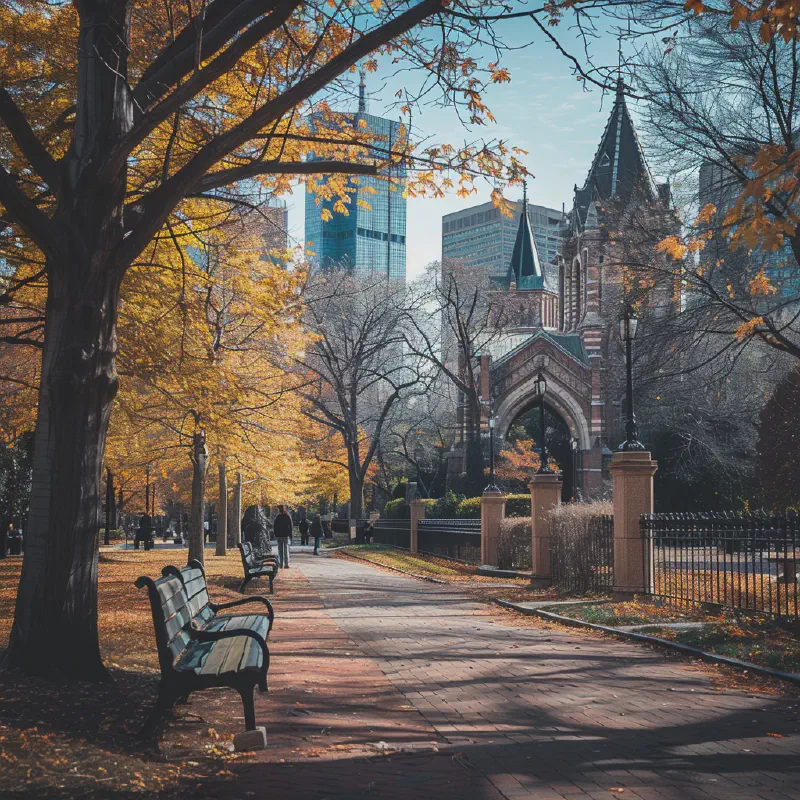The Boston Marathon is one of the most prestigious and iconic races in the world, attracting elite athletes and passionate runners from around the globe. While the participants train rigorously to prepare for the race, understanding the course itself is equally important. In this post, we will dive deep into the Boston Marathon route, exploring its historical significance, key points along the way, and offering valuable tips for both runners and spectators. Whether you’re planning to run the race or cheer on the participants, you’ll get a comprehensive understanding of the Boston Marathon route. So, let’s embark on this journey through the streets of historic Boston!
Overview of the Boston Marathon Route
The Boston Marathon route starts in the town of Hopkinton and ends on Boylston Street in Boston. It is a challenging and historic course that showcases the rich heritage of the city and provides runners with a unique and memorable experience.
The course is known for its diverse terrain, including rolling hills, flat stretches, and one particularly notorious climb known as Heartbreak Hill. It takes participants through various cities and towns, each with its own charm and support from enthusiastic spectators.
Understanding the overall layout of the Boston Marathon route is essential for both runners and spectators to fully appreciate the race. In the following sections, we will delve deeper into the specific points along the route, providing fascinating insights and practical tips to enhance your Boston Marathon experience. So, let’s explore the route from start to finish and uncover the wonders that await along the way.
Starting Point: Hopkinton
The starting point of the Boston Marathon is the town of Hopkinton, located approximately 26.2 miles west of Boston. Hopkinton holds great historical significance as the birthplace of the marathon and sets the stage for the epic race that lies ahead.
Historical Importance of Starting Point
Hopkinton has been the starting point of the Boston Marathon since its inception in 1897. The town’s involvement in the marathon stems from the inspiration of the ancient Greek legend of Pheidippides, who ran from the city of Marathon to Athens to deliver news of victory in battle. The Boston Athletic Association (BAA) adopted this concept and organized the first official marathon, with Hopkinton chosen as the starting point due to its proximity to Boston.
What to Expect in Hopkinton
On race day, Hopkinton comes alive with energy and excitement as thousands of runners gather at the starting line. The town’s picturesque New England charm and friendly atmosphere create a warm and inviting environment for both participants and spectators.
As a participant, it’s essential to arrive early in Hopkinton to allow time for registration, warm-up, and final preparations. The town provides various facilities, including restrooms, medical tents, and refreshment stations to accommodate the needs of the runners.
Spectators can witness the race’s beginning by lining the streets of Hopkinton, cheering on the participants as they embark on their journey towards Boston. The town’s residents are known for their incredible support, creating a festive atmosphere that adds to the excitement of the race.
As the starting point of the Boston Marathon, Hopkinton marks the beginning of an exhilarating and challenging adventure for runners and an inspiring spectacle for spectators. So, make sure to soak up the atmosphere and capture the spirit of this iconic race as it commences in Hopkinton.
Key Points Along the Route
The Boston Marathon route encompasses several key points along the way, each with its own significance and unique characteristics. These points not only serve as markers for runners but also offer memorable experiences for spectators. Let’s explore some of these notable locations that contribute to the allure of the Boston Marathon.
Ashland and Framingham
After leaving Hopkinton, runners pass through Ashland and Framingham, two vibrant Massachusetts towns. Ashland is known for its charming downtown area, while Framingham offers a mix of residential and commercial districts. Spectators can find prime viewing spots along the streets of these towns, cheering on the runners as they make their way through the early stages of the race.
Natick to Wellesley
Continuing along the route, participants enter Natick, a town famous for its enthusiastic crowd support. Spectators line the streets, creating a festive and energetic atmosphere that motivates the runners. As the course progresses, runners reach Wellesley, where they are greeted with the famous “Scream Tunnel.” This portion of the route is lined with Wellesley College students, known for their raucous cheering and encouragement. The energy at this point is palpable and serves as a significant boost for the runners.
Newton Hills and Heartbreak Hill
One of the most challenging sections of the Boston Marathon route is the series of hills in Newton, which culminates in the notorious Heartbreak Hill. These inclines test the endurance and mental fortitude of the participants. Spectators can witness the determination of the runners as they tackle these formidable obstacles, offering words of encouragement and support.
Boston College to Cleveland Circle
As runners conquer the Newton Hills, they enter the area surrounding Boston College. The crowd support here is particularly enthusiastic, with students and fans cheering on the participants. From Boston College to Cleveland Circle, the route offers a sense of excitement and anticipation as the finish line in downtown Boston draws closer.
These key points along the Boston Marathon route contribute to the overall experience of the race, marking milestones and providing memorable moments for both runners and spectators. So, whether you’re participating or cheering from the sidelines, make sure to embrace the energy and significance of these locations along the way.
Finishing Line: Boylston Street in Boston
The finishing line of the Boston Marathon is located on Boylston Street in the heart of Boston. This iconic stretch of road holds immense historical significance and serves as the culmination of the runners’ arduous journey.
Historical Significance of Boylston Street
Boylston Street has been the finish line of the Boston Marathon since 1986. It is a storied location that has witnessed countless moments of triumph and celebration throughout the race’s history. The street itself is named after Ward Nicholas Boylston, a benefactor of Harvard University and a prominent figure in Boston’s history.
What to Expect at the Finish Line
As runners approach Boylston Street, the excitement and anticipation in the air are palpable. Spectators gather along the sidewalks, eagerly awaiting the sight of the exhausted but determined participants crossing the finish line. The atmosphere is electric, with cheers and applause filling the air as each runner completes their marathon journey.
The finish line area is meticulously organized, ensuring a smooth and memorable experience for both runners and spectators. Race officials and volunteers guide the runners through the final meters, supporting them in their final push towards the finish line. The iconic blue and yellow banners mark the end of the race, creating an unforgettable backdrop for the triumphant finishers.
For spectators, finding a spot along Boylston Street near the finish line is an incredible opportunity to witness the culmination of months of training and dedication. The energy of the crowd is infectious, and the sense of accomplishment is palpable as runners cross the finish line, often with tears of joy and exhaustion.
In summary, Boylston Street in Boston is the ultimate destination for Boston Marathon participants. It symbolizes the culmination of their physical and mental endurance, while also providing a vibrant and emotional experience for spectators. So, join the cheering crowd and witness the exhilarating moments as runners complete their Boston Marathon journey on Boylston Street.

Tips for Navigating the Route
Successfully navigating the Boston Marathon route requires careful preparation and strategic planning. Whether you are a runner or a spectator, these tips will help you make the most of your experience along the course.
Training for the Route
For runners, training specifically for the Boston Marathon route is crucial. Incorporate hill training into your regimen to prepare for the challenging sections, such as the Newton Hills. Familiarize yourself with the terrain and plan practice runs on similar routes to build confidence and endurance.
Understanding the Course Map
Familiarize yourself with the course map to understand the route’s twists, turns, and elevation changes. Study the mile markers and aid station locations to plan your hydration and fueling strategy. Being aware of the course layout will help you mentally prepare and pace yourself accordingly.
Best Viewing Spots for Spectators
If you’re a spectator, knowing the best viewing spots along the route will allow you to catch glimpses of the runners and offer your support. Popular viewing areas include the start in Hopkinton, the Wellesley “Scream Tunnel,” and the cheering sections near Boston College and Cleveland Circle. Arrive early to secure a good vantage point, and consider bringing signs, noisemakers, or encouraging messages to uplift the runners.
Dealing with Weather Conditions
Boston Marathon weather can be unpredictable, ranging from chilly spring mornings to warm afternoons. Check the weather forecast and dress appropriately, keeping in mind that the race can be physically demanding. Bring sunscreen, hats, and extra layers for changing conditions. Stay hydrated and take advantage of the aid stations along the route.
Embracing the Spirit of the Event
Lastly, whether you’re a runner or a spectator, immerse yourself in the spirit of the Boston Marathon. Engage with fellow participants, cheer on strangers, and embrace the camaraderie that is unique to this iconic race. The Boston Marathon is not just about physical achievement but also about the shared experience and the celebration of human resilience.
By following these tips, you can navigate the Boston Marathon route with confidence and fully experience the excitement and joy that this historic race offers. So, lace up your shoes or grab your cheering gear, and prepare to be a part of the remarkable journey that is the Boston Marathon.
